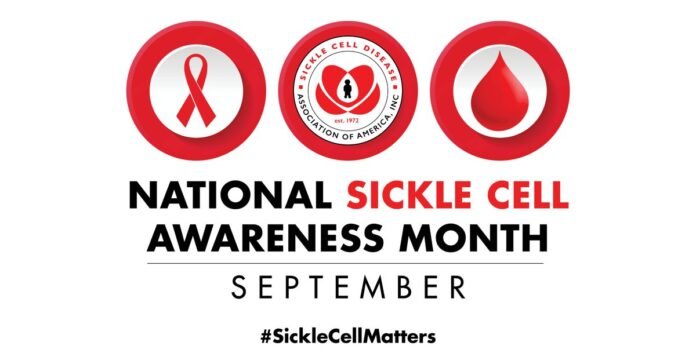September: National Sickle Cell Awareness Month
September is a month of reflection and education as we recognize National Sickle Cell Awareness Month. This is a vital time to shine a light on sickle cell disease (SCD), one of the world’s most prevalent inherited blood disorders, and the lives of those affected by it.
What Is Sickle Cell Disease (SCD)?
Sickle Cell Disease is a genetic condition that arises when a person inherits two abnormal copies of the β-globin gene—one from each parent. This genetic twist transforms healthy, round red blood cells into stiff, sickle-shaped ones. These misshapen cells can block blood flow, leading to severe pain, anemia, acute chest syndrome, stroke, organ damage, and infections. It’s a condition that can significantly impact daily life and overall health.
Scope of the Disease
Global Impact
Globally, an estimated 7.7 million people live with SCD. It’s a serious issue, causing about 34,000 deaths each year and contributing to an additional 376,000 deaths.
Concentration in Sub-Saharan Africa
Around 80% of SCD cases are found in Sub-Saharan Africa. However, the disease also appears in India, the Middle East, the Mediterranean, and among African diaspora communities worldwide.
United States
In the U.S., approximately 100,000 individuals are affected, primarily those of African descent. Alarmingly, about 1 in 13 Black or African American babies is born with the sickle cell trait, while 1 in every 365 is born with the disease itself.
Jamaica
In Jamaica, SCD is the most common inherited blood disorder. About 1 in every 150 people has the disease, and 1 in 10 carries the trait. Despite newborn screening starting in 1973, only about 25% of affected infants are diagnosed by age two through symptoms alone. This highlights the need for increased awareness and education.
Sickle Cell Trait vs. Disease
It’s important to understand the difference between sickle cell trait and sickle cell disease. Individuals with sickle cell trait (one abnormal gene copy) usually experience no symptoms. However, if both parents carry the trait, each child has a 25% chance of having SCD. This is a crucial point for families to consider when planning for the future.
Treatment & Prevention
Managing SCD often involves a combination of treatments:
- Pain Relief: Medications like hydroxyurea can help manage pain.
- Blood Transfusions: These can alleviate symptoms and prevent complications.
- Preventive Vaccinations and Antibiotics: Essential for reducing the risk of infections.
- Healthy Lifestyle Practices: Staying hydrated and regulating body temperature can make a significant difference.
Currently, a bone marrow (stem cell) transplant is the only known cure, but it’s not accessible to everyone. New gene therapies are emerging as promising alternatives, though they remain largely available only in wealthier nations.
Emerging Treatments and Global Efforts
Access to treatment remains a challenge, especially in regions like Africa and India, where SCD is most prevalent. Many modern treatments are prohibitively expensive and difficult to access. However, innovative partnerships are forming to expand early detection and provide essential medications like penicillin and hydroxyurea in Sub-Saharan Africa.
Why Awareness Matters
National Sickle Cell Awareness Month is crucial for several reasons:
- It boosts public attention, research, and policy support.
- It highlights the importance of diverse blood donations, particularly from individuals of African descent, who can provide critical matches for SCD patients.
- It educates communities to destigmatize pain crises and support those living with the disease.
As we observe this month, let’s ask ourselves: How can we contribute to a world where those affected by sickle cell disease receive the support and understanding they deserve?

